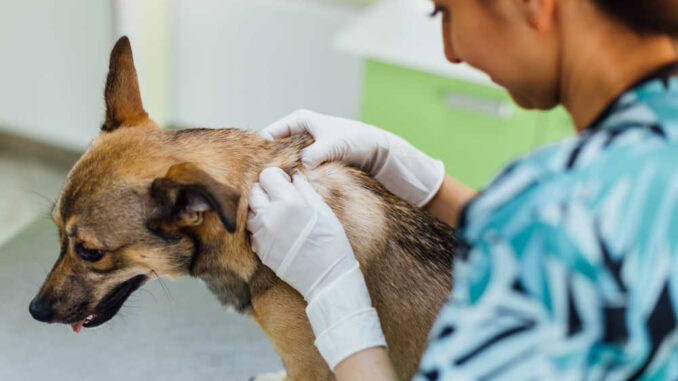
This article was updated on January 18th, 2024
Scabs serve as protective shields for injured skin, forming when skin is compromised, akin to a band-aid’s role in human wounds. Crusty scabs can form as a result of injuries or underlying health issues. In both cases, it’s a response to inflammation and the body’s attempt to heal and protect the affected area.
“Crusty scabs can form when your dog’s skin suffers an injury, but they can also be a sign that your dog is suffering from an underlying health issue such as:
– parasites,
– allergies or
– skin infections.”
Types of scabs that are crusty and/or raised
1. Scabs from injuries or self-trauma
When dogs sustain a wound or cut, the body forms a protective scab to allow the injury to heal. Usually, these lesions will appear as a dark brown to black covering because they consist of dried blood and other materials.
Black crusty scabs from injuries may be painful in the early stages and become itchy as they heal. Eventually, your pooch may try to nibble at the scab or rub it against a wall or furniture.
Crusty scabs can also happen because of self-trauma. Self-trauma is an injury where your dog excessively licks or scratches their skin, as shown in this picture below:

The lesions from self-trauma are common under the armpits and along the flanks. Causes of extreme itching include the medical conditions mentioned earlier: for example, environmental or food allergies, or skin infections.
Below is an example of a surgery incision that has not healed well because of the dog’s excessive licking of the area. The medical conditions listed above can lead dogs to excessively scratch or lick themselves, which can cause damage to their skin & scabs.
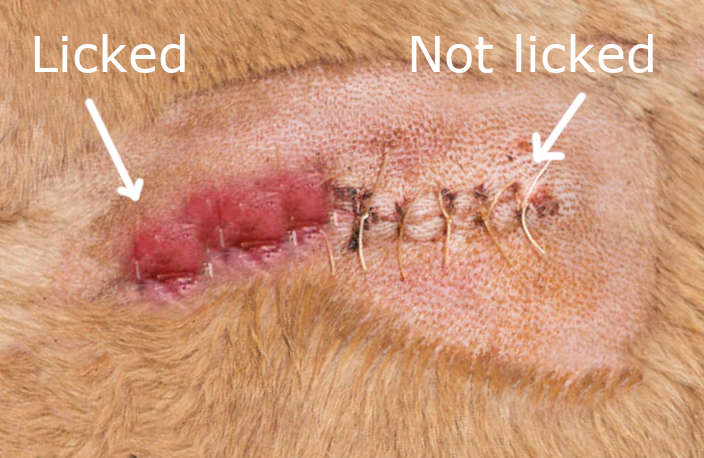
“If your dog is self-traumatizing, speak to your vet about an Elizabethan collar, clothing, or other methods to stop them while the lesion is healing.”
2. Skin Parasites
Skin parasites that can trigger itching and crusty yellow or black scabs on your dog include fleas, mites, and ticks.
Fleas – Some dogs react to flea bites and have dry, itchy skin. When this happens, your pup will chew or bite along the back and base of the tail, which leads to hair loss. A dog with fleas may exhibit behaviors such as excessive scratching, biting, and restlessness, often accompanied by visible skin irritation. Read our articles: how to tell if your dog has fleas or view pictures of flea scabs.
Pictures of crusty scabs from flea allergies:
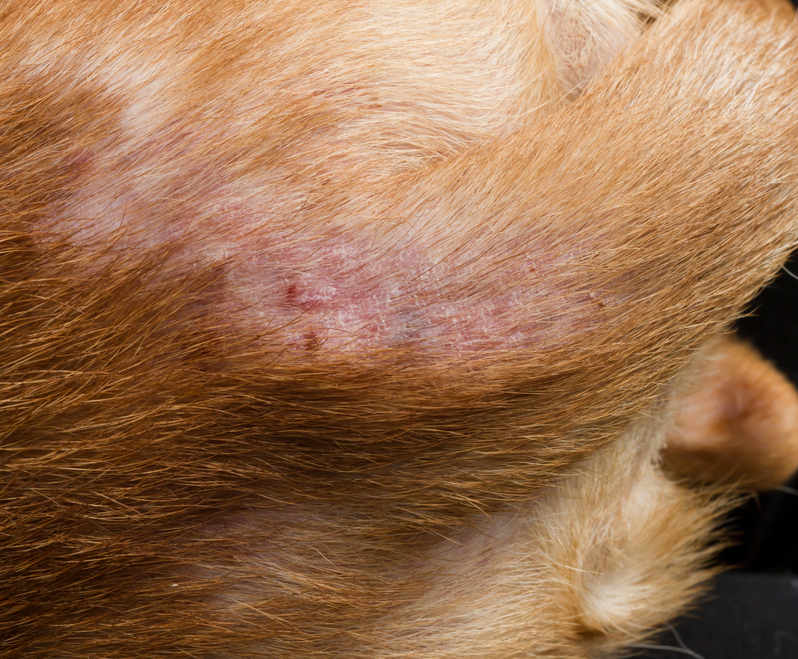
Mites – Mites can cause two types of mange in dogs, demodectic and sarcoptic.
Demodectic mange usually manifests with red, scaly skin, hair loss, and infections that create yellow crusty scabs on your dog. Read our article: what dog mites (mange) look like in dogs.
Pictures of crusty scabs from mites:
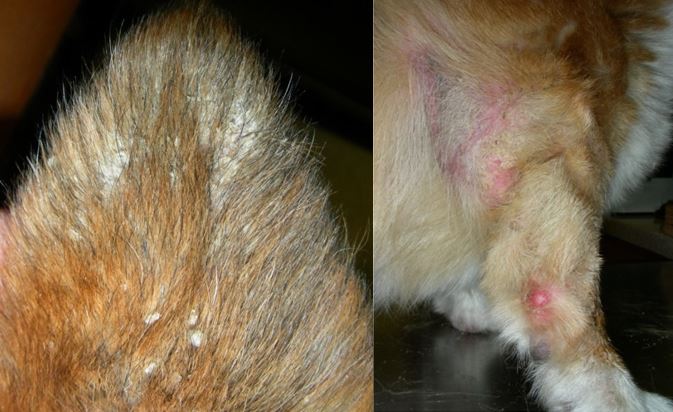
With sarcoptic mange, dogs have:
- Extreme itching and rashes
- Reddened skin
- Hair loss
- Crusty yellow scabs
- Thickened skin
Ticks – When ticks bury their heads under your dog’s skin, it causes itching. Black crusty scabs on your dog form when your dog continuously scratches at the area (read about tick scabs).
3. Allergies
Allergies are relatively common in dogs, affecting approximately 10-20% of the canine population. Whether your dog reacts to food, chemicals, or environmental allergens, he’s going to scratch at the affected area. The continual itching can lead to open sores and black, crusty scabs on your dog. In addition to constant itching and scabs, other signs of allergies can include:
- Hives
- Reddened skin
- Chronic ear infections
- Swelling around the face, ears, and earflaps
- Sneezing
- Diarrhea/vomiting
- Hair loss
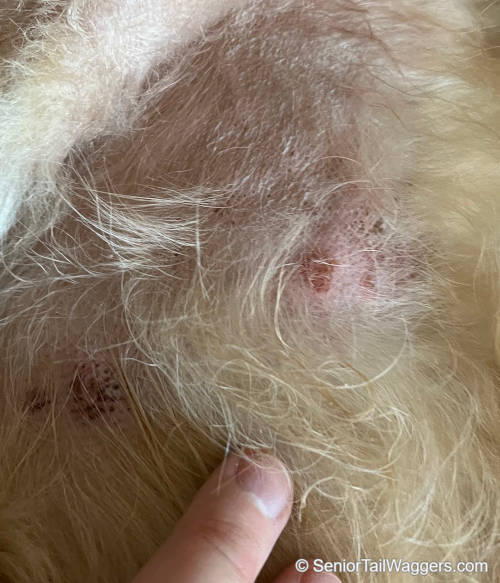
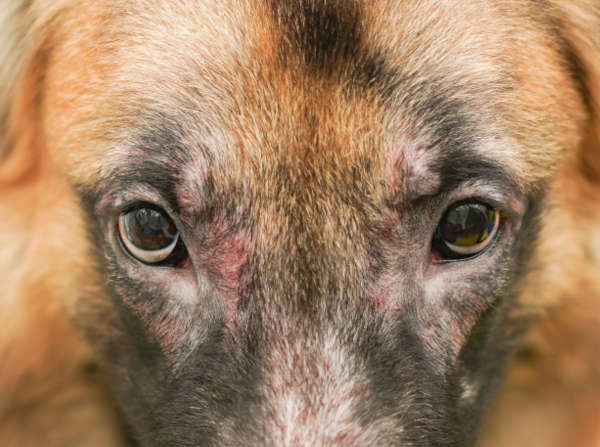
Learn more with our article about skin allergies.
4. Skin infections
Bacterial and yeast skin infections can cause crusty scabs on dogs.
Bacterial – When bacteria such as Staphylococcus infect your dog’s skin, you may observe:
- Crusty, yellow scabs
- Itching
- Pussy discharge
- Dry, flaky skin patches
- Patchy hair loss
- Redness and inflammation
- Deep infections may have swelling
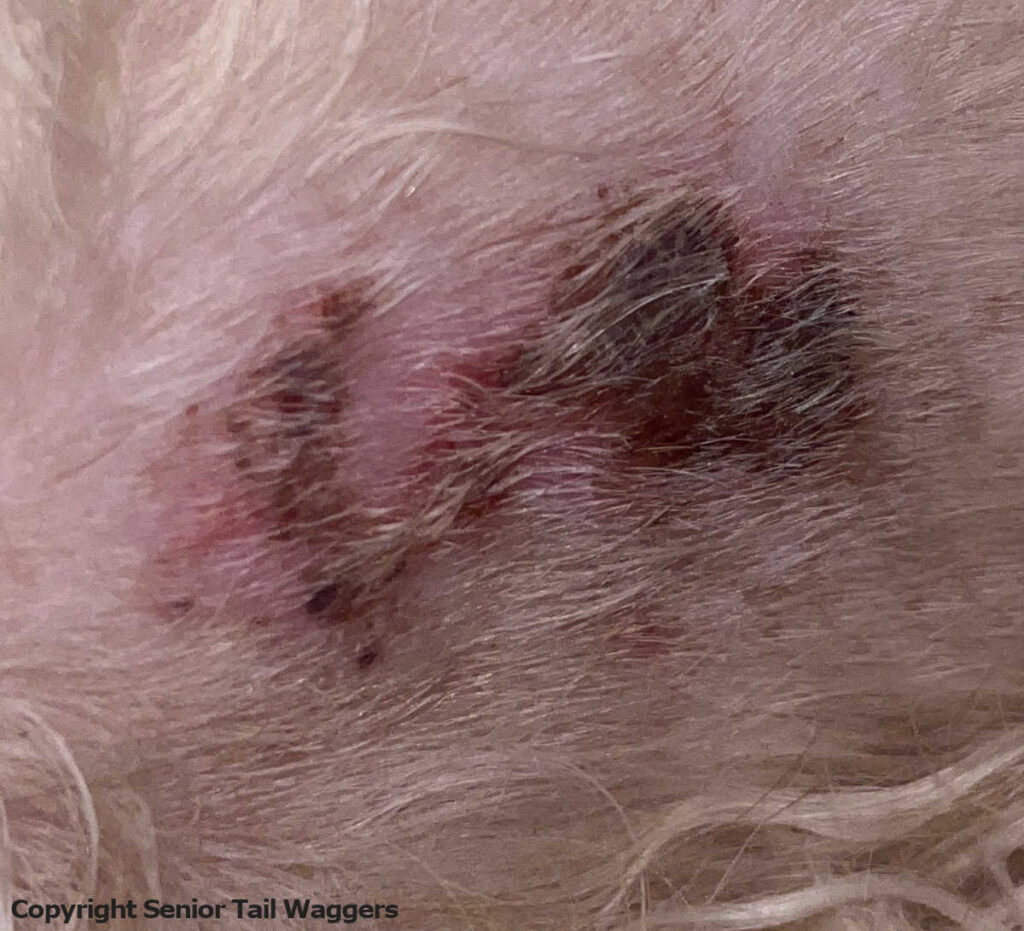
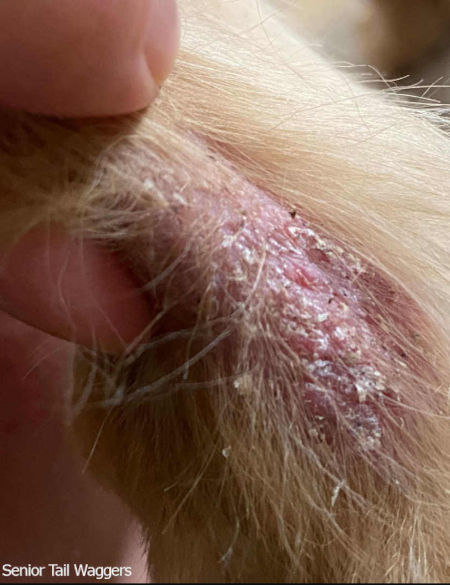
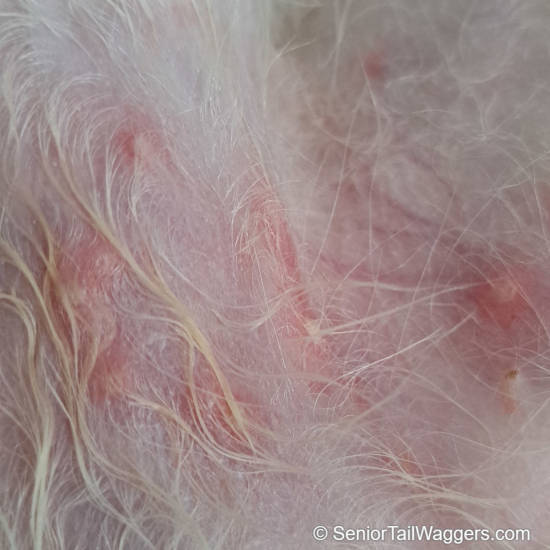
Fungus/Yeast – When yeast or fungus infects your dog’s skin, it causes:
- Crusty black or yellow scabs
- Itchiness
- Smelly skin
- Greasy coat
- Yellow-green discharge
- Thickened (elephant) skin
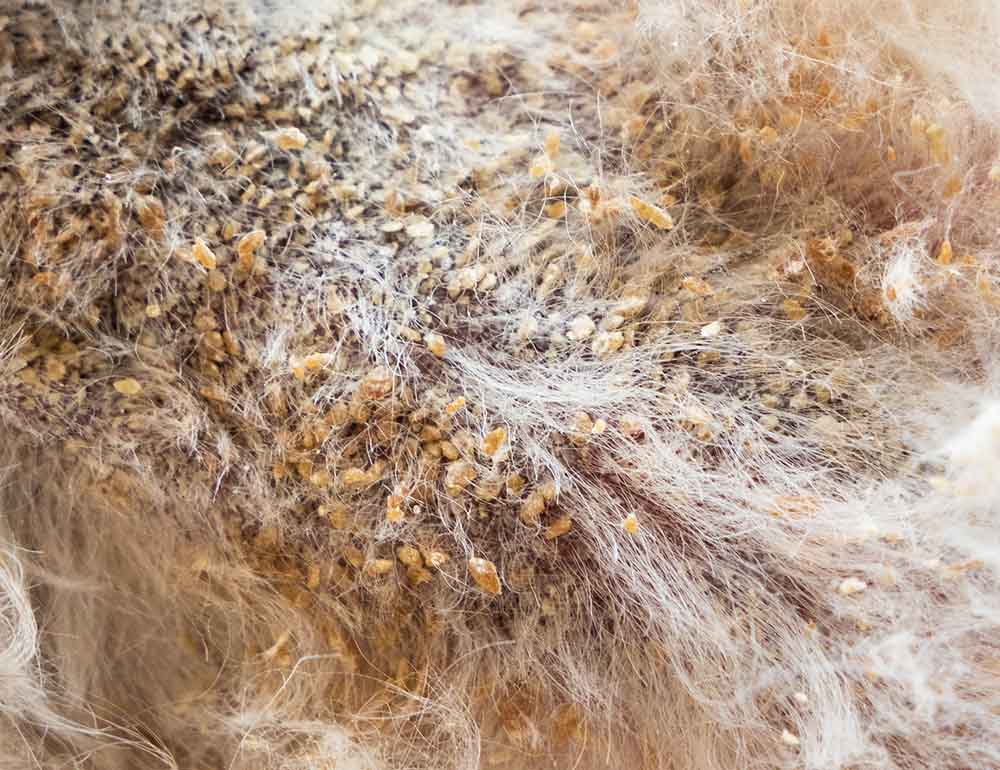
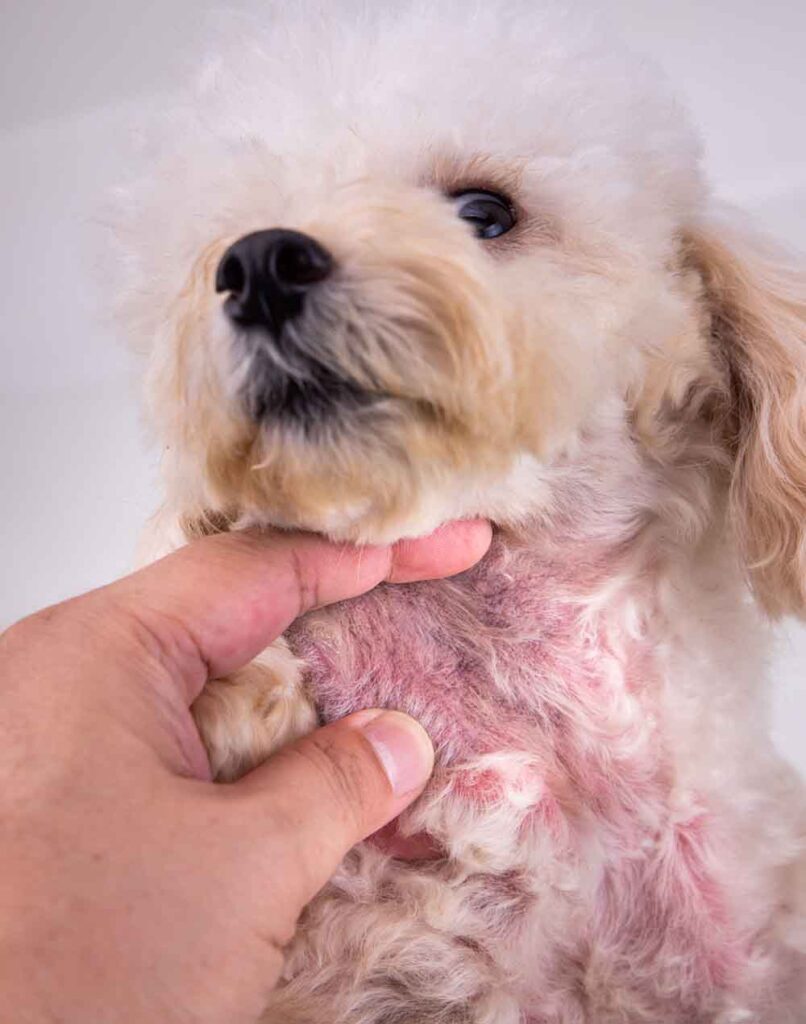
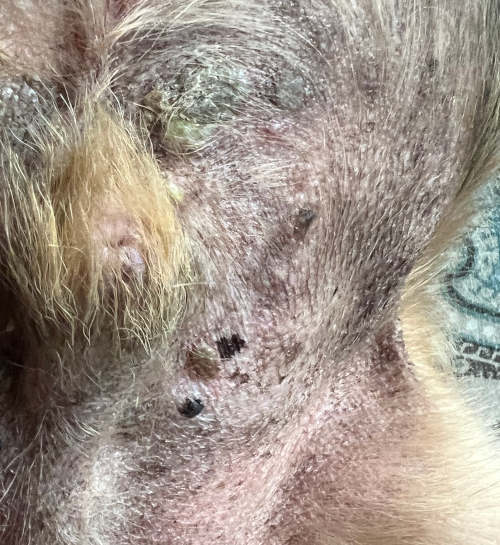
5. Seborrheic dermatitis
Seborrheic dermatitis (seborrhea) is a chronic inflammatory skin disease in dogs. In seborrheic dermatitis, the canine sebaceous gland produces too much sebum, and this causes:
- Crusty, thickened areas on the skin
- Red, itchy skin
- Dry, flaky skin patches
- Hair loss
- Yeasty odor
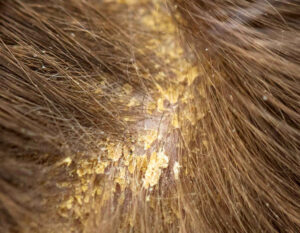
Scabs from injuries can heal on their own in 3-14 days, but persistent crusty scab need veterinary treatment
An isolated scab from a minor injury should heal on its own without any intervention. As long as your dog isn’t showing signs of pain and inflammation, or other concerning symptoms listed below, you should be able to monitor your dog at home. Regular crusty scabs on dogs due to injury generally heal in about 3-14 days.
There are times when you should seek veterinary help for your dog’s scabs. You should bring your pup to the clinic for an exam and treatment if you notice the following:
- Continual licking/itching – When your pup is licking, scratching, or rubbing the area excessively, or itching lasts for more than a few days, he can make it worse or trigger an infection.
- Discharge/signs of infection – If the scab is oozing pus or a yellow-green discharge, it’s likely there’s an infection that requires attention. Read our article about incision infections in dogs.
- Inflammation/redness – When the scab has red edges or other signs of inflammation, including pain and feeling warm to the touch, it should be examined by a vet.
- Scabs keep coming back – If any home remedies you use for scabs don’t help, and the scabs recur, there may be an underlying condition causing the scabs.
- Widespread or multiple scabs – When dogs have widespread scabs, it’s usually not related to an injury. Your veterinarian can help you figure out the underlying condition that’s causing the crusty scabs on your dog.
- Extensive injuries – When a single wound is large, it may require stitches to promote healing.
Some things you can do at home to help with crusty black or yellow scabs
When your dog’s scabs appear to be isolated and related to an injury, there are some things you can do to help them heal.
- E-collar – If your pooch is licking or biting the scab, you can use an Elizabethan collar to prevent self-trauma to the area. Continual irritation of the skin from licking, scratching, or biting causes a release of histamines which trigger further inflammation. By keeping your dog from the affected area, you may be able to reduce itchiness.
- Keep it clean – You can gently flush or bathe the scab with a saltwater solution to remove loose skin, dirt, and hair. Do not scrub the scab or attempt to remove the protective covering.
- Diet/supplements – Dietary deficiencies can cause skin conditions and scabs. Ensure your pup is on a balanced diet that provides all the essential nutrients. You can also supplement with fish oil to support healthy skin. For allergies, you may also consider feeding a hypoallergenic diet.
- Antifungal/medicated shampoos – If you suspect a bacterial or yeast infection is causing crusty black or yellow scabs on your dog, try using a medicated shampoo. Check with your veterinarian for the best option for your dog’s condition.
- Anthelmintics – If your pup suffers from skin parasites, treat them with an appropriate anti-parasitic medication to eliminate the pests.
- OTC medications – You may be able to use Benadryl or a topical antibacterial/antifungal ointment to help clear up the underlying causes of your dog’s scabs. 1-2 mg/pound of regular Benadryl can reduce allergic symptoms and itching. Do not give Benadryl-D to your dog. Check with your veterinarian for recommendations about topical medications.
Most scabs from wounds or injuries usually resolve in 3 days to 2 weeks, depending on the severity of the initial lesion. If you’re treating yellow or black crusty scabs on your dog at home, you should see improvement in your pup’s condition in the first few days. If your dog’s scabs are not starting to heal after about 3-5 days, you should contact your veterinarian.
FAQ: What does it mean if the scab is yellow or black?
Crusty scabs come in a variety of shapes, sizes, and colors:
Black crusty scabs: when clots dry and harden, they often appear black (Read our article about black scabs on dogs).
Yellow crusty scabs: scabs on dogs can also have a yellow hue if your dog has seborrhea. Bacterial and yeast skin infections can cause crusty yellow scabs on dogs.
Related posts:
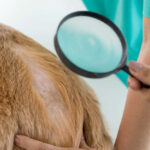 Scabs on Dogs [With Pictures]: Our Vets Explain What To Do - One common problem we often encounter as veterinarians is the presence of scabs (serous crusts) on a dog’s skin. Scabs… [...]
Scabs on Dogs [With Pictures]: Our Vets Explain What To Do - One common problem we often encounter as veterinarians is the presence of scabs (serous crusts) on a dog’s skin. Scabs… [...] Dog with Scabs & Losing Hair: Our Vet Explains What to Do - A dog losing hair in patches with scabs is a problem that many owners come to see us about at… [...]
Dog with Scabs & Losing Hair: Our Vet Explains What to Do - A dog losing hair in patches with scabs is a problem that many owners come to see us about at… [...]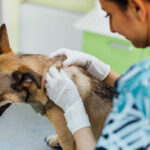 Black Scabs on Dog: Top Reasons & What to Do - The majority of black scabs will be insignificant and pose no threat to your dog. However, some black scabs could… [...]
Black Scabs on Dog: Top Reasons & What to Do - The majority of black scabs will be insignificant and pose no threat to your dog. However, some black scabs could… [...]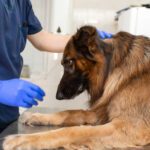 Scabs on Dog’s Head or Neck: Top Reasons [With Pictures] - Discovering scabs on your dog's body can be alarming, particularly when these scabs are on your dog's neck or head.… [...]
Scabs on Dog’s Head or Neck: Top Reasons [With Pictures] - Discovering scabs on your dog's body can be alarming, particularly when these scabs are on your dog's neck or head.… [...]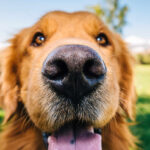 Dog Nose Scabs and Lumps [Pictures & Vet Advice] - Dogs use their nose and sense of smell to explore the world around them. As most owners know, dogs will… [...]
Dog Nose Scabs and Lumps [Pictures & Vet Advice] - Dogs use their nose and sense of smell to explore the world around them. As most owners know, dogs will… [...]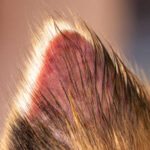 Dog Has Scabs On Ears: Top Causes & Vet Advice - In this article, our experienced veterinarian Dr. Chyrle Bonk walks you through common causes of scabs on a dog’s ears,… [...]
Dog Has Scabs On Ears: Top Causes & Vet Advice - In this article, our experienced veterinarian Dr. Chyrle Bonk walks you through common causes of scabs on a dog’s ears,… [...]Disclaimer: This website's content is not a substitute for veterinary care. Always consult with your veterinarian for healthcare decisions. Read More.



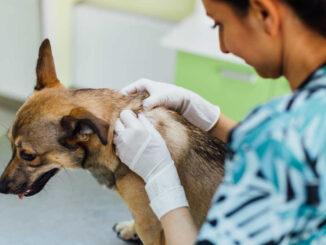
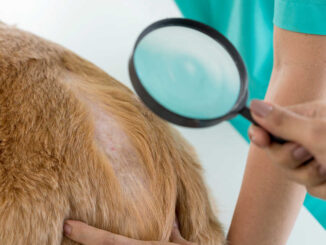
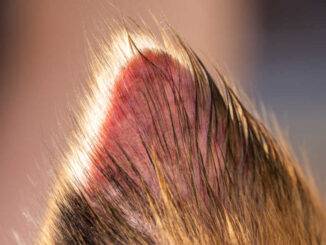
Once upon a time I was a Vet tech. Now I am 76 years old and have never professed to have a Veterinarian’s knowledge.
Best guess would be that Doug-the Pug has some kind of fungus growing on his sheath,belly,inner thighs and anus. By description- these black “growths” are no larger than a dime, almost scale-like and somewhat rubbery in their constitution.
Doug is now in his senior years as well as I. He is in good health and does not seem to be affected by these “growths”. They sometimes crumble a bit but do not wash away.None of your informative descriptions match his which is what troubles me the most. I do not believe he is the exception to the rule but I remain stymied by what Doug has nor how to treat it.There must be a simple explanation but I am at a loss as to what this can be. Thank you for your time and any consideration you care to share. Pictures upon request.
With Kindest Regards,
Martha Crowdes